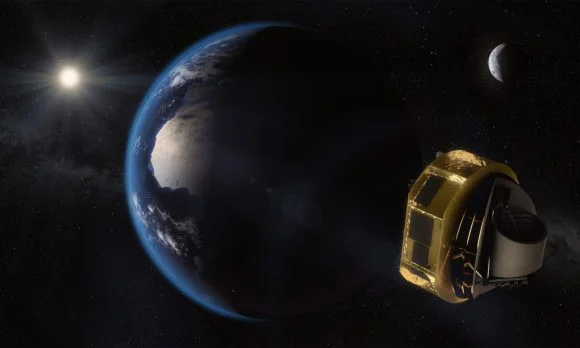Ariel


The mission will analyse the atmospheres of a large sample of exoplanets (ESA)

Ariel (Atmospheric Remote-sensing Exoplanet Large-survey) is an ambitious European Space Agency (ESA) mission planned to answer fundamental questions about how planetary systems form and evolve by investigating the atmosphere of a significant sample of planets orbiting stars other than the Sun, known as exoplanets. It is scheduled for launch in 2028.
The Ariel mission will study a statistically large sample of exoplanets in order to determine the relationship between the chemistry of a planet and the environment in which it is formed, or how the host star influences its birth and evolution, among others. For 3.5 years, Ariel will observe more than 1,000 exoplanets ranging from hot Jupiter-like planets to super-Earths, covering a wide variety of environments. While some of the observed planets could be potentially habitable, the main focus of the mission will be on exotic, hot, gigantic planets similar in size to Neptune, with orbits very close to their stars.
Ariel will have a 1-metre-diameter mirror to collect infrared light from distant stellar systems and focus it on a spectrometer. This will cover a wavelength range from 0.6 to 7 micrometres, ideal for extracting chemical footprints from the planets' atmospheric gases as they pass in front of or behind their stars, in what is called traffic or occultation.
Acknowledgements: This work was (partially) supported by the Spanish MICIN/AEI/10.13039/501100011033 and by "ERDF A way of making Europe" by the European Union through grants PID2021-125627OB-C31, PGC2018-098153-B-C33 (MCI/AEI/FEDER, EU), ESP2016-80435-C2-1-R (MINECO/FEDER, EU), ESP2014-57495-C2-2-R (MINECO/FEDER, EU) It is also supported by PCI2022-135049-2 (MICIN / AEI / 10.13039/501100011033 / NextGeneration EU, PRTR).
THE IEEC CONTRIBUTION
The IEEC is one of the institutions of the consortium, which comprises more than 70 institutes from 17 countries, that have developed the mission concept, leading the Spanish contribution, which also includes the Instituto de Astrofísica de Canarias (IAC) and the Universidad Politécnica de Madrid (UPM). The Institute is involved in several aspects of the mission. From the scientific point of view, it studies the effects of stellar activity by means of transit spectroscopy, due to the spectrophotometric variability caused by starspots, and collaborates in the selection of the sample to be studied. On the technical side, the IEEC leads the mission planning work using the experience gained in scheduling techniques to optimise operations and study the impact of mission design requirements. In addition, the IEEC is responsible for the design of the Telescope Control Unit (which controls the telescope sensors and operates the secondary mirror) and the design and manufacture of the secondary mirror refocusing system mechanisms.
TEAM
With the support of




